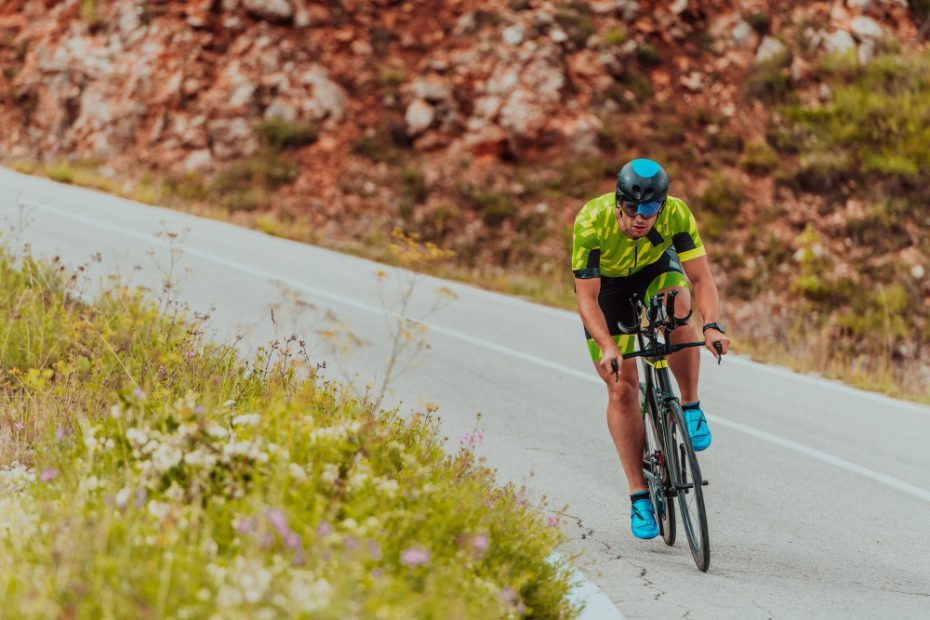How do you train for an endurance bike ride?
Riding a bike is not only a great way to stay fit and healthy, but it can also be a challenging and rewarding sport. If you’re planning to take part in an endurance bike ride, whether it’s a long-distance race or a multi-day tour, proper training is essential to ensure you have the stamina and strength to complete the journey.
To prepare yourself for an endurance bike ride, you need to focus on three key areas: cardiovascular fitness, muscular endurance, and mental resilience. By training in these areas, you will be able to tackle long distances, climb steep hills, and overcome any physical and mental obstacles that come your way.
Cardiovascular Fitness
Cardiovascular fitness is crucial when it comes to endurance biking. It refers to the ability of your heart and lungs to supply oxygen-rich blood to your muscles during sustained exercise. To improve your cardiovascular fitness, you should include regular aerobic exercises such as cycling, running, or swimming in your training routine. Start with shorter rides at a moderate intensity and gradually increase the duration and intensity over time.
Muscular Endurance
Muscular endurance plays a vital role in endurance biking as it allows your muscles to work efficiently for extended periods. To build muscular endurance, incorporate strength training exercises into your routine. Focus on exercises that target your legs, such as squats, lunges, and calf raises. Additionally, consider adding cross-training activities like yoga or Pilates to improve flexibility and prevent injuries.
Mental Resilience
Endurance biking requires mental strength and resilience to overcome fatigue and push through challenging moments. Building mental resilience can be achieved through various strategies, such as setting realistic goals, visualization techniques, and positive self-talk. Incorporating regular meditation or mindfulness practices into your routine can also help improve focus and reduce anxiety during long rides.
Training Plan
Creating a structured training plan will help you stay motivated and ensure you are making progress towards your goals. Here’s an example of a weekly training plan:
| Day | Activity | Duration/Distance | Intensity |
|---|---|---|---|
| Monday | Cycling | 60 minutes | Moderate |
| Tuesday | Strength training | – | High |
| Wednesday | Rest day | – | – |
| Thursday | Cycling | 90 minutes | Steady |
| Friday | Yoga | – | – |
| Saturday | Cycling | 120 minutes | Moderate |
| Sunday | Rest day | – | – |
Remember to gradually increase the duration and intensity of your rides as you progress. Allow for rest and recovery days to prevent overtraining and reduce the risk of injury.
Tips for Success
Here are some additional tips to help you succeed in your training:
- Stay hydrated: Drink plenty of water before, during, and after your rides to maintain optimal performance.
- Fuel your body: Consume a balanced diet rich in carbohydrates, proteins, and healthy fats to support your energy needs.
- Get proper rest: Ensure you get enough sleep to allow your body to recover and repair.
“The only way to go fast is to go long.” – Alex Dowsett, professional cyclist
Training for an endurance bike ride requires dedication, commitment, and consistency. By following a well-rounded training plan and adopting the right mindset, you can maximize your performance and enjoy the journey. Remember to listen to your body, set realistic goals, and most importantly, have fun!
How far can you realistically bike in a day?
Cycling is a great way to explore the outdoors, stay fit, and challenge yourself. If you are planning an endurance bike ride, it’s essential to know how far you can realistically bike in a day. The distance you can cover depends on various factors:
1. Fitness level:
Your fitness level plays a significant role in determining how far you can comfortably cycle in a day. If you are an experienced cyclist with good stamina, you can cover longer distances compared to a beginner.
2. Terrain:
The type of terrain you will be cycling on also affects the distance you can cover. Riding on flat roads or gentle slopes allows you to maintain a faster pace and cover more miles. However, hilly terrains or off-road trails may slow you down and reduce your overall distance.
3. Weather conditions:
The weather can impact your cycling performance. Strong winds, extreme heat, or heavy rain can make it more challenging to pedal for long distances. It’s important to be aware of the weather forecast and plan your rides accordingly.
4. Bike and equipment:
The quality of your bike and equipment can affect your endurance and comfort. Investing in a well-maintained bike with appropriate gear ratios and comfortable seating can help you go further without major fatigue or discomfort.
Considering these factors, an average recreational cyclist can aim to cover around 50 to 70 miles in a day, while experienced cyclists can push their limits to 100 miles or more. However, it’s crucial to listen to your body and avoid overexertion, especially if you are new to long-distance cycling.
“Cycling is not just a physical challenge, but also a mental journey. It’s about pushing yourself and exploring new limits.”
If you are training for an endurance bike ride, it’s recommended to gradually increase your mileage over time. Start with shorter distances and progressively add more miles each week. This approach allows your body to adapt and build the necessary endurance.
Here is an example of a training plan for a 100-mile bike ride:
- Week 1: Aim for three rides of 20-30 miles each.
- Week 2: Increase to four rides of 30-40 miles each.
- Week 3: Include one long ride of 50 miles and two shorter rides of 20-30 miles.
- Week 4: Take a recovery week with lighter rides of 20-30 miles.
- Week 5: Resume increasing mileage, aiming for two rides of 40-50 miles and one longer ride of 60-70 miles.
- Week 6: Maintain your longest ride of 60-70 miles, with two shorter rides of 30-40 miles.
- Week 7: Taper down and reduce mileage before the event.
Remember to fuel your body properly with nutritious food and stay hydrated during your rides. Rest and recovery are equally important in training for endurance cycling.
In conclusion, how far you can realistically bike in a day depends on your fitness level, terrain, weather conditions, and equipment. Gradually building up your mileage and listening to your body will help you determine your personal limits and achieve your endurance cycling goals.



